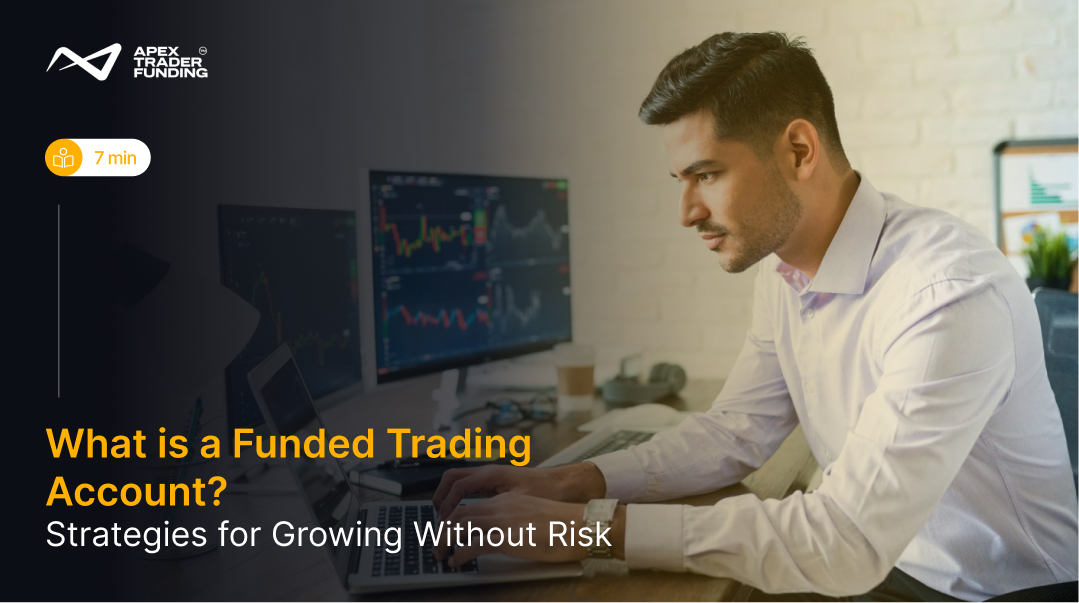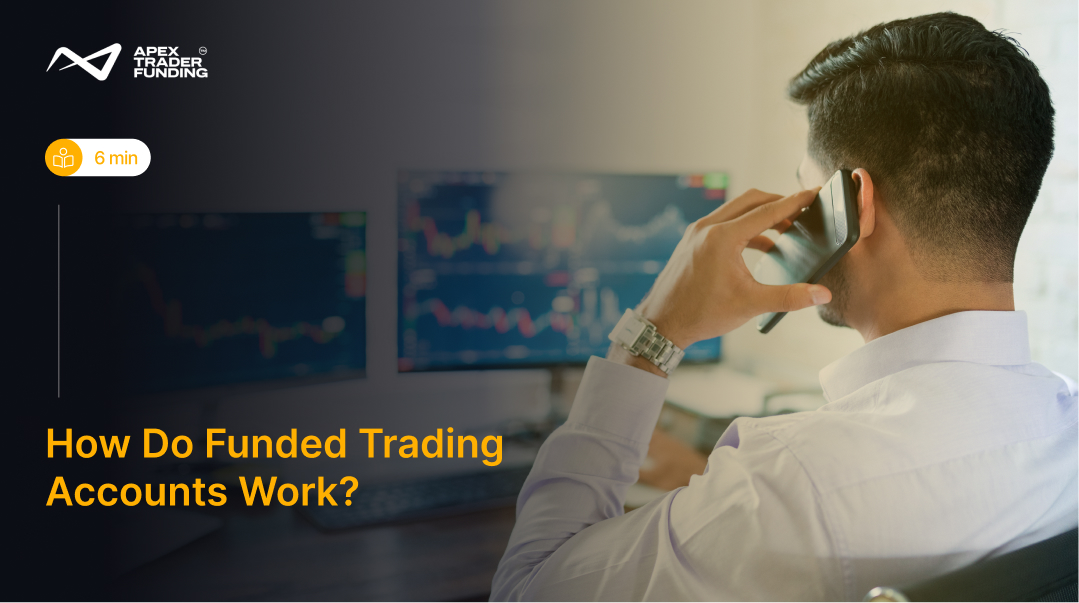
trading-education | 05-11-25
In today’s trading landscape, proprietary trading firms—or prop firms—have become a bridge between skill and opportunity. They allow traders to access significant capital, trade global markets, and share in the profits without risking personal funds. Yet, the decision of which firm to join is far from simple.
The right prop firm can accelerate a trader’s growth, providing structure, technology, and fair rules. The wrong one can limit progress with hidden restrictions or unclear payout practices.
Choosing wisely means understanding not just what a firm offers, but how its model supports your long-term development as a trader.
How to Choose a Prop Firm?
The right prop firm is one that aligns with your trading goals, risk management approach, and expectations for transparency. Before joining, study how the firm defines its rules—profit targets, drawdown limits, and daily loss thresholds should be clear, fair, and designed to reward consistency rather than luck. A credible firm provides realistic evaluation conditions, avoids unnecessary restrictions, and clearly explains how funding transitions work once you pass the challenge.
Equally important is understanding the firm’s integrity and support structure. Reputable prop firms are upfront about their fees, payout timelines, and profit-split percentages, ensuring traders know exactly how they’ll be compensated. Firms that also offer educational resources, analytics tools, or community support demonstrate a commitment to helping traders grow beyond the evaluation phase. In short, choose a firm that values structure, fairness, and trader development—because funding is only sustainable when trust and discipline come first.
Matching the Firm to Your Trading Style
Every trader approaches the market differently, and no single firm suits everyone. The right prop firm should align with how you manage trades, risk, and decision-making. Some firms encourage active strategies with flexible trade frequency, while others are built around measured pacing and controlled exposure.
Equally important is how the firm structures its risk parameters. Aggressive traders may perform better under higher drawdown allowances and looser daily loss limits, whereas those who prefer consistency benefit from firms that reward discipline and steady performance. The best prop firm gives you room to trade naturally, offering fair conditions, transparent limits, and an environment that supports your style rather than restricting it.
Understanding Evaluation Rules
Prop firms exist to identify disciplined traders who can handle risk responsibly. That’s why most have structured evaluations or performance challenges. Understanding these rules is critical before you commit.
The most common parameters include profit targets, drawdown limits, maximum daily losses, and minimum trading days. A balanced firm sets achievable targets, typically around 8–10%—while enforcing reasonable risk controls. Be cautious of firms that overemphasize speed or short deadlines, as these create unnecessary pressure and encourage reckless trading.
It’s equally important to understand the type of drawdown a firm uses.
- A static drawdown remains fixed relative to your starting balance.
- A trailing drawdown follows your highest profit point, reducing flexibility.
Your choice should depend on your trading rhythm—swing traders often prefer static drawdowns, while day traders can adapt to trailing ones.
“A prop firm’s rules aren’t barriers to success — they’re the blueprint for it. The traders who respect structure are the ones who keep their funding.”
Key Evaluation Factors to Review
Cost, Profit Split, and Payout Ethics
Financial transparency defines a firm’s integrity. While many traders focus on low evaluation fees or high profit splits, what matters most is how those terms are enforced in practice.
Most structured firms offer 80–90% profit splits, with consistent performers eligible for higher tiers. Avoid firms that make payout processes complicated or frequently change their terms, these are warning signs of instability.
Consistency in payouts is one of the strongest indicators of a trustworthy partner. The best prop firms make the process seamless, predictable, and fair.
Educational Support and Growth Environment
A good prop firm recognizes that its success depends on the trader’s growth. Firms that provide educational resources, community discussions, or access to mentorship often produce more consistent, long-term performers.
This is especially true for traders transitioning from personal accounts. Having access to coaching, analytics, and peer learning opportunities transforms funding from a financial service into a learning partnership.
Choosing a firm that invests in its traders signals you’re entering an ecosystem—not just renting capital.
Financial Transparency and Growth Potential
Understanding the economics of a prop firm is as vital as its rules. Every trader should know exactly how fees, payouts, and scaling opportunities work. Transparent firms clearly outline evaluation costs, refund policies, and profit-sharing models.
A trustworthy firm maintains predictable payouts—often bi-weekly or monthly—and rewards consistency with higher profit splits or increased account sizes. When comparing options, choose stability and fairness over short-term allure. A slightly higher fee with a reputable firm is far safer than a cheaper, unreliable one.
“The best prop firms don’t just fund trades; they build traders. Capital opens doors, but integrity and discipline keep them open.”
Conclusion – Funding Is Easy, Growth Takes Structure
The prop firm you choose will define your trading journey more than any single strategy or setup. Instant access to capital may sound appealing, but it’s the firms that combine funding with structure, education, and transparency that truly help traders evolve.
Join Apex Trader Funding to experience transparent rules and reliable growth.
Execute your strategy on Tradovate and access real-time precision through Rithmic.
Trade with confidence, clarity, and the structure that turns opportunity into consistency.
FAQs
The 90% rule refers to the observation that roughly 90% of traders lose 90% of their capital within 90 days of starting to trade. It highlights how emotional decisions, poor risk management, and lack of structure can quickly lead to losses. Prop firms that enforce disciplined rules and evaluations help traders avoid this pitfall by teaching consistency and risk control before handling large capital.
There isn’t a single strategy that guarantees consistent success in futures trading, but several proven approaches are widely used by professional traders. Common strategies include trading based on technical indicators, moving averages, Bollinger Bands, and price action patterns. Many futures traders also rely on volume profile analysis, Fibonacci retracements, and candlestick formations to identify entry and exit points. The most successful strategy is one that matches your market understanding, risk tolerance, and ability to stay disciplined under real trading conditions.
While it’s possible for day traders to make 1% a day, maintaining that level of return consistently is extremely difficult. Markets fluctuate, and even skilled traders experience losses. Professional traders—especially in prop firms—focus less on daily profit goals and more on risk management, consistency, and rule-based execution. Over time, steady growth and disciplined trading produce better results than chasing fixed daily percentages.
Related Blogs

trading-education | 22-08-25
What is a Funded Trading Account? - Detailed Guide
Trading has traditionally required large amounts of personal capital, leaving many aspiring traders locked out. A funded account changes that...
Read more
trading-education | 23-08-25
How Do Funded Trading Accounts Work?
Many new traders face the same challenge: limited capital and limited experience. Jumping into markets with personal savings often leads...
Read more
trading-education | 25-08-25
How to Get Funds for Trading? - 6 Practical Ways
Starting a trading journey often requires more than knowledge—it requires capital. Yet many aspiring traders face the same challenge: how...
Read more